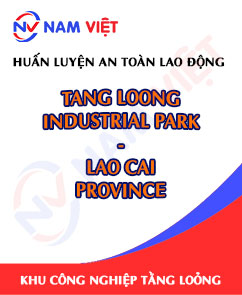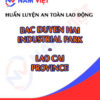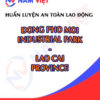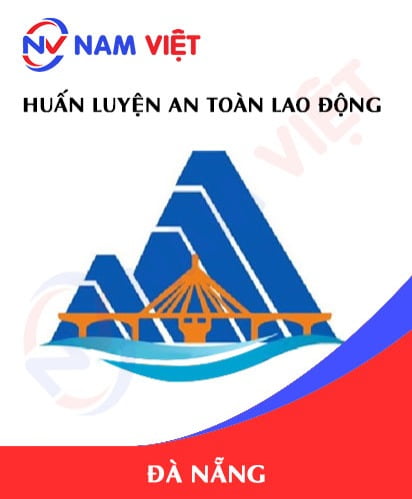Occupational Safety Training at Tang Loong Industrial Park
99,000 ₫
Note: The above price is calculated for one person, and the price may fluctuate depending on the number of trainees participating in the course and market movements. For more accurate price support, please refer to the pricing table or contact our consulting staff directly.
Occupational safety is an important issue in Tang Loong Industrial Park and needs to be addressed promptly to ensure the health and safety of workers and enhance the reputation of businesses here. The Occupational Safety Training course is one of the effective solutions to raise awareness about accident prevention for workers in Tang Loong Industrial Park.
Table of Contents
Toggle1. Overview of Tang Loong Industrial Park
a. History of Tang Loong Industrial Park
On the foundation of the important mission of industrialization and modernization of the country, Tang Loong Industrial Park has become a symbol of economic growth and outstanding development of Lao Cai province. Today, let’s review the historical formation process of this industrial park, a proud achievement of Northern Vietnam.
On February 10, 2011, according to Decision No. 285/QD-UBND of the People’s Committee of Lao Cai province, Tang Loong Industrial Park was officially established, affirming the province’s determination to create a favorable and attractive business environment to attract investors. With a prime geographic location and supportive incentive policies, Tang Loong Industrial Park quickly drew attention from major domestic and foreign enterprises.
Lao Cai, a mountainous province with ethnic minority populations, faced many difficulties in implementing industrialization policies. However, in recent years, the province has achieved remarkable breakthroughs in local tourism, attracting attention with the beauty of its scenic spots and a wave of domestic and international visitors. This has created favorable conditions for transportation and trade of goods, attracting a large workforce from neighboring provinces to rental factories, contributing a highly skilled labor force to the northern industrial sector.

b. Companies within Tang Loong Industrial Park
Updating
c. Economic potential of Tang Loong Industrial Park
With a planned area of up to 1,100 ha, of which 653.21 ha are allocated for industrial purposes, Tang Loong Industrial Park has demonstrated both scale and development potential. The park’s infrastructure is built comprehensively, adhering to international standards. The electricity, water, drainage, telecommunications, and transport systems are all invested in and upgraded to meet production and living requirements.
Not only is Tang Loong a notable industrial park, but it also aims to develop into the leading industrial park of Lao Cai province. With a focus on warehouse and factory leasing, multi-sector production such as agricultural processing, import-export, fertilizers, and clean industrial chemicals, Tang Loong Industrial Park has created strong momentum for regional economic development.
Through the dedication and relentless efforts of local authorities and enterprises, Tang Loong Industrial Park has overcome challenges and become an attractive investment destination, generating employment opportunities and sustainable economic growth for Lao Cai and the surrounding region.
Through significant achievements, the formation history of Tang Loong Industrial Park is not only a story of a business location but also a testament to the progress and development aspirations of Northern Vietnam.

d. Geographic location of Tang Loong Industrial Park
View map: here
Location: Phu Nhuan commune and Tang Loong town, Bao Thang district, Lao Cai province.
- By road: 400 km from Hanoi city
- By air: 380 km from Noi Bai Airport
- By sea: 500 km from Hai Phong port
Total area: 700 ha
2. Overview of occupational safety training at Tang Loong Industrial Park
a. What is occupational safety training?
- The occupational safety training in Lao Cai is an intensive training course on occupational safety for people working in industrial, construction, manufacturing, and other high-risk sectors. This course is organized by Nam Viet’s occupational safety professional training centers at Tang Loong Industrial Park.
- In this course, participants are provided with the knowledge and skills necessary to ensure safety for themselves and their colleagues during work. Training topics include labor safety regulations, risk identification and assessment, methods for inspecting and maintaining safety equipment, first aid skills, and emergency response procedures.
- For enterprises, training employees in occupational safety not only enhances staff capacity and work efficiency but also ensures compliance with legal labor safety regulations and minimizes the risk of workplace accidents during production and business activities.
REGISTER FOR OCCUPATIONAL SAFETY TRAINING SERVICE
b. Training duration
Occupational safety training duration depends on factors such as job type and sector. However, the exact duration for each group is stipulated in Article 19 of Decree 44/2016/ND-CP
- Group 1: 16 hours
- Group 2: 48 hours
- Group 3: 24 hours
- Group 4: 16 hours
- Group 5: 16 hours
- Group 6: 4 hours
c. Training content
Occupational safety training content includes knowledge and skills needed to reduce workplace accident risks, ensuring safety for workers and company assets. Specifically, it may include:
- Knowledge of labor safety laws and regulations of the state and enterprises.
- Knowledge of hazards and types of workplace accidents.
- Skills in using personal protective equipment and collective safety devices.
- Methods to minimize accident risks and ensure safety during work.
- Emergency response and rescue procedures in case of accidents.
- Knowledge of workplace environmental protection.
Training content can also be adjusted according to industry type and specific working conditions.
d. Occupational safety training certificate
Occupational safety and hygiene training certificate
- The certificate format is described in Form 08, Appendix II of Decree 44/2016/ND-CP and is issued to Groups 1, 2, 5, 6.
- The certificate measures 13 cm x 19 cm, with a light blue front cover.

- The content of the front side is shown in the image above
- The back has a white background with content as shown below.

- The card format is detailed in Form 06, Appendix II of Decree 44/2016/ND-CP
- Group 3 workers will be issued an Occupational Safety Card (commonly called Group 3 Occupational Safety Certificate).
- The card measures 60 mm x 90 mm, with front and back content as shown in the image below.

The employer can issue a Group 3 Occupational Safety Card to the trained individual after they pass the assessment and have an employment contract between both parties.
- The tracking book for Groups 1, 2, 5, 6 is detailed in Form 09, Appendix II of Decree 44/2016/ND-CP.
- The tracking book for Group 3 is detailed in Form 10, Appendix II of Decree 44/2016/ND-CP.
- The tracking book for Group 4 is detailed in Form 11, Appendix II of Decree 44/2016/ND-CP.
- Group 4 only receives a tracking book without a Group 4 Safety Certificate.
- The content of Group 4 tracking book is shown in the image below.

3. Employment issues at Tang Loong Industrial Park
Tang Loong Industrial Park has significantly contributed to creating employment opportunities for local residents and neighboring areas. With rapid development and the attraction of numerous enterprises, the park has become a source of stable and well-paid jobs for workers.
Enterprises within Tang Loong Industrial Park recruit for diverse positions such as workers, engineers, production managers, technicians, office staff, and many other roles. Investments in modern infrastructure meeting international standards also facilitate the attraction of high-quality human resources to work at the park.
Importantly, Tang Loong Industrial Park provides many opportunities for workers in Lao Cai province and surrounding regions. With increasing labor demand from businesses, residents can find jobs in manufacturing, processing, transportation, and related services.
Furthermore, the industrial park plays an essential role in training and developing human resources. Enterprises often collaborate with universities, vocational schools, and other training organizations to provide specialized courses and skill enhancement programs, improving professional competence and increasing labor market competitiveness.
4. Main causes of workplace accidents in industrial parks
The main causes of workplace accidents in industrial parks include:
- Non-compliance with labor safety standards: Some industrial parks do not meet labor safety standards or lack sufficient personal protective equipment for workers.
- Insufficient staff training: Some workers are not adequately trained in occupational safety and do not know how to use protective equipment.
- Lack of safety equipment: Some industrial parks lack safety equipment such as ladders, railings, emergency exits, and fire-fighting systems.
- Lack of supervision: Some industrial parks do not have a safety supervision team, or supervision is insufficient and safety systems are not regularly checked.
- Excessive working hours: Some workers work too long or do not get sufficient rest, causing fatigue and errors during work.
- Failure to follow safety regulations: Some workers do not follow safety rules or fail to wear adequate protective equipment, leading to workplace accidents.

5. Measures to Control Occupational Accidents in Tang Loong Industrial Park
Controlling occupational accidents is a key priority in Tang Loong Industrial Park to ensure the safety and health of workers. The following are some measures applied to reduce occupational accidents in this industrial park:
- Occupational safety management system: Develop and implement occupational safety regulations and procedures in all enterprises operating within the industrial park. Ensure compliance with safety regulations and provide full personal protective equipment for workers.
- Training and raising awareness on occupational safety: Organize training courses for workers to enhance awareness of risks and preventive measures. Additionally, through communication and education, foster a safety-conscious culture among the workforce.
- Periodic inspection and supervision: Conduct regular inspections and monitor compliance with occupational safety regulations in enterprises. This may include checking equipment, safety systems, and ensuring safe work procedures are followed.
- Use of technology and safety equipment: Apply modern technologies and safety equipment to minimize occupational accident risks. This may include alarm systems, automated machinery, and protective equipment to ensure safety during production.
- Incident management and root cause analysis: Strictly manage incidents and investigate the causes of occupational accidents. Based on this, propose improvements and preventive measures to avoid similar accidents in the future.
- Periodically conduct occupational environment monitoring in factories, collect and analyze harmful factors for workers, then adjust to reduce hazards and prevent occupational diseases.
1 review for Occupational Safety Training at Tang Loong Industrial Park
No comments yet












phanminhhang341
Hài lòng với cách tổ chức lớp của Nam Việt nhé